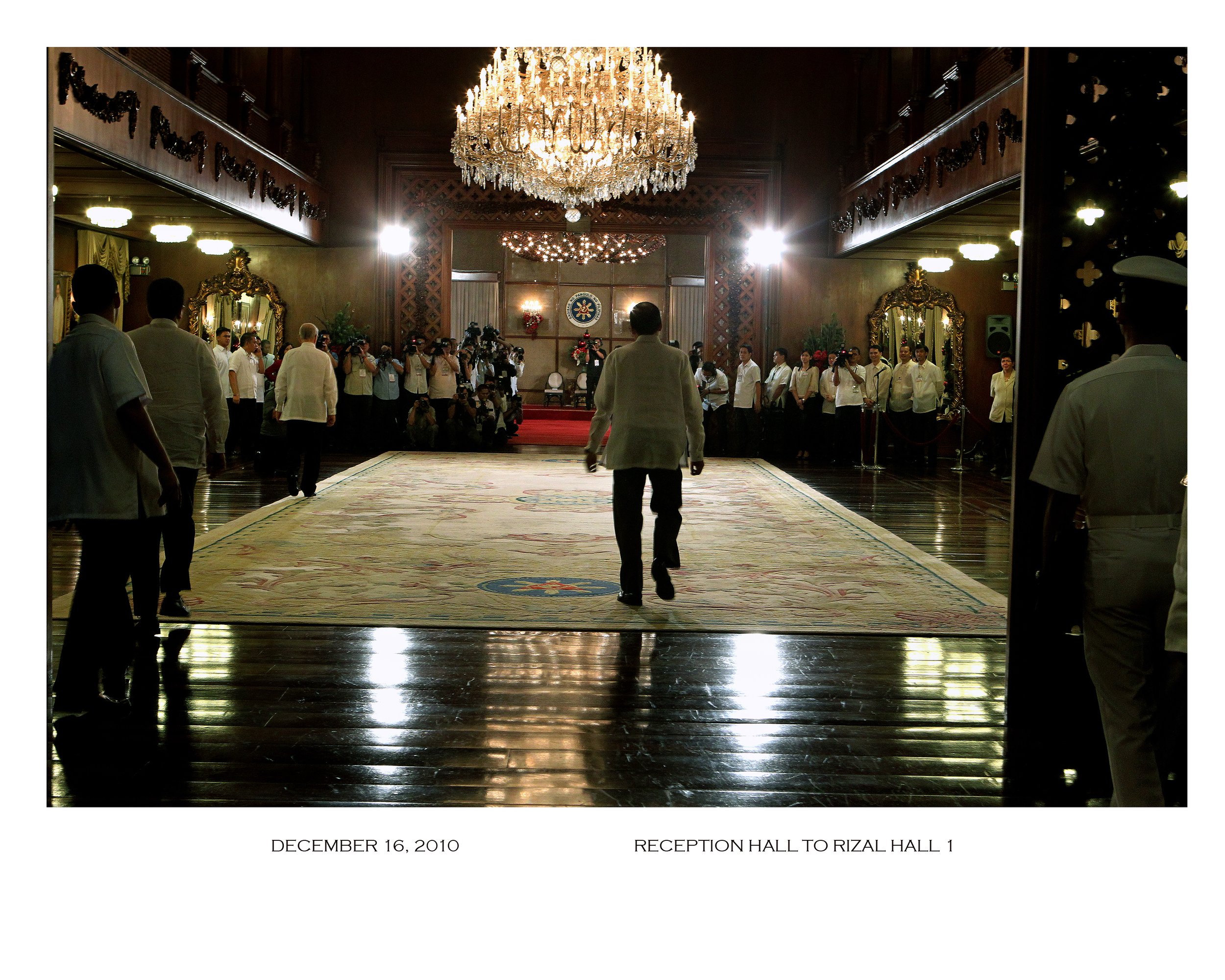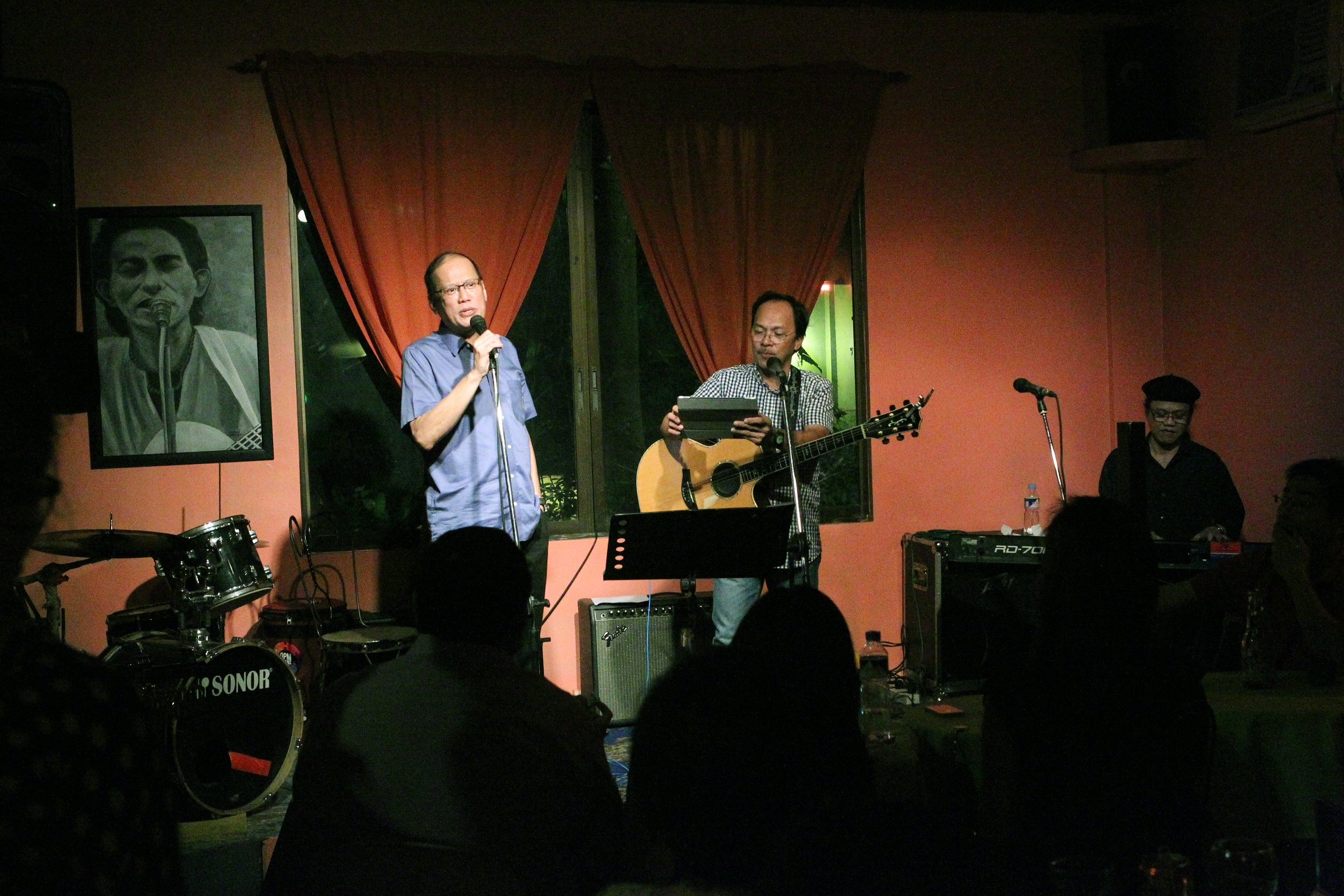Memories in the lens of a retired photojournalist
by Athena Altiche
Gil Nartea, 70, known as “Tata Gil,” dedicated his life to photojournalism from his college years to his senior days. As he looks back, he feels fulfilled with how his life turned out.
Tata Gil graduated from Adamson University with a degree in AB English. He shared that during college, he often joined rallies and at one point, his camera was even confiscated by the police in the U.S. Embassy.
His first job was with Photo Bank Philippines in 1983, a non-government organization that documented the state of the Philippines under the administration of Ferdinand Marcos Sr. They traveled to different parts of the country, training locals in photography.
Then he moved on to magazines, newspapers, and even became a freelancer. He remembers, “Noong 70s hanggang before EDSA, ‘yun talaga [ang peak ng photojournalism]. Araw-araw talaga ang daming nangyayari. Kaya maraming dyaryo non.”
Photo by Athena Altiche
He covered different parts of the country and joined training overseas. However, the photos he accumulated until 2004 disappeared. He said, “Lahat ng negatives ko nawala. Kasi nasa Midweek ako noon, tapos nagsara. Kinukuha ko negatives ko tapos sabi ng may-ari magbubukas pa tayo… tapos biglang binaha sila.”
While this has been the situation, he has to move forward, and continue capturing photos. Apart from this, he also had the time to teach photojournalism in the College of Media Communication (formerly Mass Communication), in University of the Philippines Diliman.
Career as Close-in Photographer
One opportunity came one after another, until he secured a job that took his career into another level. “May isang tambayan kami noon as journalists… hanggang sa dumating ang chief of staff ni Mar Roxas hanggang sa inoffer sa akin… Mula noon nasa senate ako,” Tata Gil shared.
It was the first time for Tata Gil to be a close-in photographer of Mar Roxas, but when he lost the presidential election in 2010, his subject shifted to Benigno Simeon “Noynoy” Aquino.







Photos by Gil Nartea
With Noynoy, capturing photos became different, the subject is not just another person, but the president of the Philippines. “Malaking pribilehiyo sa isang photographer tulad ko na ang subject mo ay ang presidente at pinagkakatiwalaan ka at laging kasama,” he shared.
Tata Gil shared that there are eight close-in photographers for the president, and he is the Chief of Photographer, the one that needs to go in all places with Noynoy.
His passion to cover the president extends beyond the set working hours. He said, “Hanggang gising ang presidente, andun ka dapat. Fixed salary, walang overtime. Ako, gustong-gusto ko ‘yon. After office hours niya, kasama ako roon. Gusto ko makapag-shoot sakaniya ng kakaiba. ‘Yung hindi nakikita ng mga tao.”
After Noynoy’s Death
When Noynoy died, Kris Aquino, sister of Noynoy, contacted him for a project to digitize photos during Cory Aquino’s presidency in Malacañang. However, after one year the project was stopped.
Tata Gil returned to the Senate to work with another politician. But again, it felt different—this time, he no longer felt the spark in covering his subject. “Kaya sumama loob ko talaga kasi hindi ko gusto subject ko. Para gumanda ang image, kailangan nasa puso mo. Kapag wala talaga… kahit yung mga litrato na nagagawa mo, kapag hindi mo gusto ang subject mo, wala talaga.”
The spark in Tata Gil’s career dimmed further when the senator chose not to renew his contract. He shared, “Gusto niya, fashion. Ayaw niya ng kinukuhaan siya ng naglalakad. Ayaw niya ng photojournalism. Kapag manatili ka sa ganon, hindi ka na photojournalist, studio photojournalist ka nalang.”
Guided by ethical principles, Tata Gil closes this chapter of his career with his head held high, knowing he remained true to the values of his profession.
Last February 2025, the Aquinos launched a coffee table book to tribute the legacy of Noynoy Aquino, and the majority of the photos were Tata Gil’s contribution.
Life after Photojournalism
Now that he is retired from photojournalism, Tata Gil says he is satisfied with how his life has unfolded.
He reflected on how the state of photojournalism today is a far cry from what he once witnessed—once at its peak, now gradually fading. He emphasized that the profession is not financially rewarding if treated as a primary livelihood.
“Walang pera rito sa photojournalism. Ang pera rito ang kasaysayan kasi na-document mo. ‘Yun ang kayamanan mo,” Tata Gil said.
He still takes on side gigs, shooting videos for a newsroom every Saturday, and occasionally joins coverages out of personal interest.
Tata Gil’s world now revolves around spending his time with family, and fetching his grandchildren from school.
Editor's note:
This article is part of the spotlight interview of members of the Photojournalists' Center of the Philippines. Celebrating the life, work and contribution to the photojournalism industry of the PCP members.


